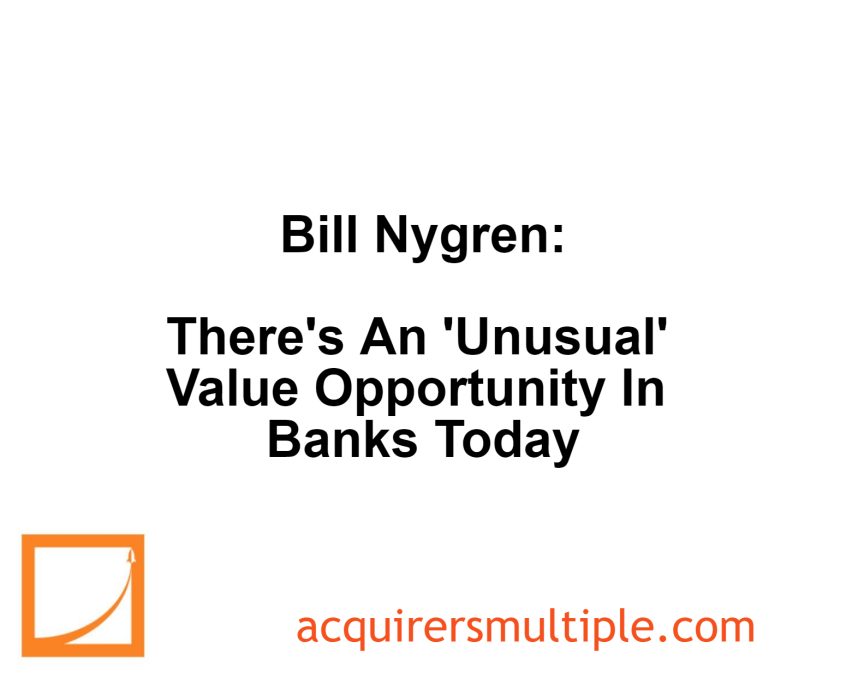During his recent interview with Colossus, Bill Nygren explained why there is an ‘unusual’ value opportunity in Banks today. Here’s an excerpt from the interview:
Nygren: I think if you look at the past generation or two, where banks trade versus the S&P 500, they’ve typically sold at about two-thirds of the S&P 500 multiple. We think that kind of makes sense. I think it’s hard to argue that this is a better-than-average industry and difficult to say why banks should sell at 18x earnings when the S&P 500 sells there.
But at Oakmark, we’re always looking for opportunities of where prices get out of line with both their history and what we think fundamental value is. And today, the average bank sells at probably less than half of the S&P 500 multiple. So a larger discount than it has historically. And also, we would argue the industry itself is in much better shape than it was at the time of the GFC, especially regarding credit risk. We think there’s an unusual opportunity in banking.
I mentioned earlier to us getting an opinion about the people in charge of various banks is one of the most important things because of the leverage and the opaqueness of the financial accounting, capital allocation is hugely important. One of the reasons that we think the industry is more attractive today than it was pre-GFC is almost all of the leadership teams of the large banks agree that when they cannot grow at the rate they want to making loans to creditworthy customers, they’re all willing to grow by shrinking the denominator today.
When there are organic growth opportunities, returning capital to the shareholders, both through dividends and share repurchase is central to our philosophy at Oakmark that we want managements that are comfortable giving capital back to the owners when they don’t have good growth opportunities. I think book value is a good starting point. A well-run bank ought to be worth book value.
It’s probably hard to get much more than twice that in terms of what the underlying value could be. And it’s funny. I started in this business a little over 40 years ago, and one of the rules of thumb back then was that if you’re looking at a bank, the PE should roughly equate to its return on equity. So if it earns 8% on equity, it should sell at 8x earnings. If it earns 15% on equity, it could sell at 15x earnings.
And through all of the changes in the past 40 years and whether interest rates have been near zero or up over 10%, the math behind that very simple PE should about equal return on equity still approximately holds today. So for us, that’s one of the other metrics that we would look at is how big a discount PE is available in the market relative to the return on equity the company is achieving.
You can listen to the entire interview here:
For all the latest news and podcasts, join our free newsletter here.
Don’t forget to check out our FREE Large Cap 1000 – Stock Screener, here at The Acquirer’s Multiple:



